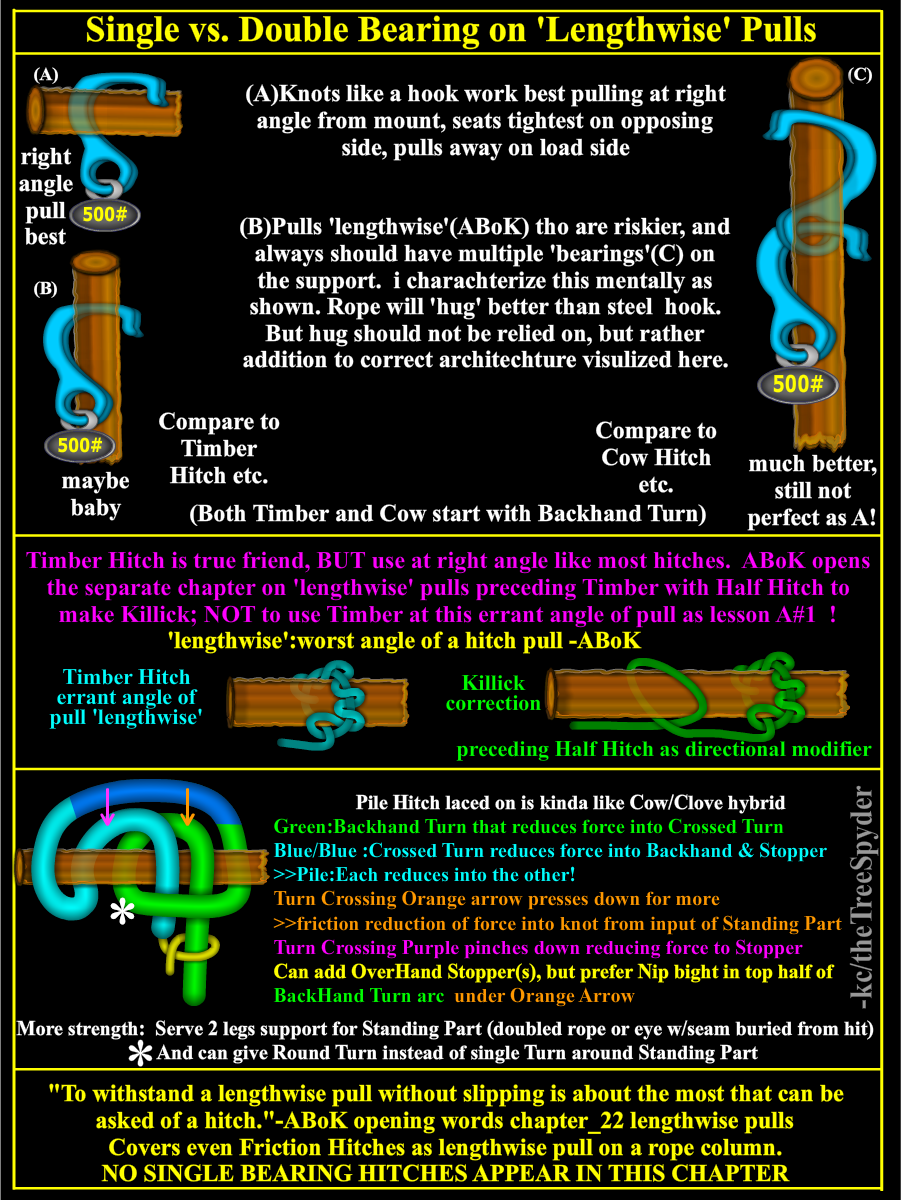Another Best/required reading, free online production is
Life-On-a-Line Dr. D.F.Merchant
A very passionate plea for rescue correctness, and the means to do so!
Constantly come back to Pure Inline models of this correctness in all forms here too from educated author.
.
Stronger Fig.8 via softer arc thereby closer to straighter line(s) of support:
.
AMEN: ABSOLUTELY SAGE ADVICE FOR LINES AND THEIR BUILDS:
.
.
Personally would give Spanish Windlass (tourniquet twister with stick) to tighten brace lines for stakes.
>>But even in these extraneous examples, the Pure Inline mantra fits!
.
This and previous book / above Technical Paper BOTH, Very Strongly helped build my views and understandings of working rope.
above Technical Paper: The Mechanics of Friction in Rope Rescue presented to International Technical Rescue Symposium 1999
by Stephen W. Attaway:GA.Tech Masters Structural Engineering + Computational Mechanics (modeling stresses, displacements) Ph.D.
>>mostly for Porty friction model, to then extend to ALL knots,
but then also sift out some yin-yang/reciprocal force of grip on host math in the successive half circles quoted (friction co-efficient removed)
to explain differences shown AND as a separate exploitable/valuable item of it's own inside the secret world and force lines of knots, et all working rope.
.
Even the 2nd best selling MILLENNIUMS old text in the world of all time and likewise core of human thought and development stands as: "Euclid's Elements" (of Math, Geometry, Logic etc.) points to sifting to straight line models!
>>#1 strategy of digestion and sorting; and what to chase thru there lists as:
Ancient History Encyclopedia: Greek Mathematics: said:
"The technique of abstraction, based on ignoring physical considerations which are seen as merely incidental.
Whether it was a rope, a piece of wood or any other physical object was irrelevant.
It was all about properties of 'straight lines' connecting at angles, nothing more.
These lines are simply mental constructs and the only entity necessary to the solution of the problem.
The process of abstraction is about getting rid of all the nonessential elements and considering only what is fundamental."
(LINK)
i find the 'Pure Inline' mantra here too.
Seems like they were talking about us: force, rope, wood, straight lines etc.!
.
educatedclimber.com/ashley-book-knots/ (.pdf) remains the best all around reference; now seen online.
But, the books above present more openly the base , 'abstracted' principles for weighing and measuring all rope works for me;
that i always try to more manually sift and 'abstract'; on own from Ashley; to these the fewest to remember as most deep, pivotal points.
















